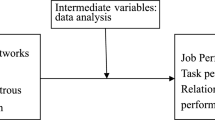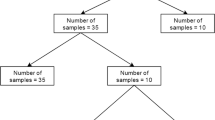Abstract
Innovation is the center of the enterprise development, which is the main driving force of enterprises’ competitiveness. To evaluate the enterprises’ innovation ability, we firstly establish an index system which aims at analyzing the enterprise innovation ability. We also retrieve the data of the listed companies in Wind database from 2015 to 2019 and label them using factor analysis method. Then, a new deep learning classificational framework with attention mechanism and LSTM is established. The results show that when attention mechanism and LSTM are added into the convolutional neural network(CNN), the model’s prediction performance is better improved, and the accuracy, recall, precision and F-score are 0.914, 0.914, 0.916 and 0.915, respectively. This indicates the strong generalization ability of our new model. Finally, we also find that patents and R &D expenditures are the most important factor affecting the corporate innovation ability through SHapley Additive exPlanations(SHAP). Companies with more patents and R &D expenditures are generally considered to be more innovative.



Similar content being viewed by others
References
Ciftci, M., Cready, W.M.: Scale effects of R &D as reflected in earnings and returns. J. Acc. Econ. 52(1), 62–80 (2011)
Schumpeter, J.A.: On the concept of social value. Quart. J. Econ. 23, 213–232 (1909)
Holmstrom, B.: Agency costs and innovation. J. Econ. Behav. Org. 12(3), 305–327 (1989)
Wang, S.: How does stock market liberalization influence corporate innovation? Evidence from stock connect scheme in China. Emerg. Mark. Rev. 47(2), 100762 (2021)
Chemmanur, T.J., Loutskina, E., Tian, X.: Corporate venture capital, value creation, and innovation. Soc. Sci. Electron. Publ. 27(8), 2434–2473 (2011)
Cornaggia, J., Tian, X., Wolfe, B.: Does banking competition affect innovation? J. Financ. Econ. 115(1), 189–209 (2013)
Fang, V.W., Tian, X., Tice, S.: Does stock liquidity enhance or impede firm innovation? Soc. Sci. Electron. Publ. 69(5), 2085–2125 (2014)
Atanassov, J.: Do hostile takeovers stifle innovation? Evidence from antitakeover legislation and corporate patenting. J. Financ. 68(3), 1097–1131 (2013)
Wang, Y.R., Xu, Q.L.: Evaluation of green technology innovation capacity of automobile manufacture industry. Appl. Mech. Mater. 44–47, 206–212 (2011)
Zhen, Z., Yao, Y.: Optimizing deep learning and neural network to explore enterprise technology innovation model. Neural Comput. Appl. 33(2), 755–771 (2021)
Duan, Y.: Construction of evaluation index system for independent innovation of management model of enterprises. Int. J. Intell. Inf. Manag. Sci. 7(4), 69–72 (2018)
Tian, Z., Wang, X.: Enterprise technology innovation and production performance based on machine learning and IoT artificial intelligence system. J. Ambient Intell. Hum. Comput. 8, 1–13 (2021)
Pan, X., Han, C., Lu, X., et al.: Green innovation ability evaluation of manufacturing enterprises based on AHP-OVP model. Ann. Oper. Res. 290(1), 409–419 (2020)
Lin, H.: Enterprise ERP system optimization based on deep learning and dynamic fuzzy model. J. Intell. Fuzzy Syst. 38(1), 1–13 (2020)
Liu, Q., Liang, Y., Guo, Q., et al.: Empirical evaluation of innovation capability of equipment manufacturing enterprises based on cloud model. Int. J. Comput. Eng. 4(3), 206–212 (2019)
Li, H., Zhang, Q., Zheng, Z.: Research on enterprise radical innovation based on machine learning in big data background. J. Supercomput. 76(5), 1–15 (2018)
Wu, T., Liu, X.W.: An interval type-2 fuzzy ANP approach to evaluate enterprise technological innovation ability. Kybernetes 45(9), 1486–1500 (2016)
Zhou, Z.F.: On evaluation model of green technology innovation capability of pulp and paper enterprise based on support vector machines. Adv. Mater. Res. 2986(886–886), 285–288 (2014)
Liu, R., Wang, R., Liu, Q., et al.: Review of comprehensive evaluation methods for power quality and its trend in new generation energy system. IOP Confer. Ser.: Earth Environ. Sci. 113(1), 012190–012190 (2018)
Meng, X.L., Fan, G.L., Cao, X.H., et al.: Research on a multi-index comprehensive evaluation method for surface water quality assessment. Adv. Mater. Res. 1010–1012, 321–324 (2014)
Liu, Z., Zhan, Q., Tian, G.: Research review on comprehensive evaluation of factor analysis. Stat. Decis. 19, 68–73 (2019)
Amin, J., Sharif, M., Raza, M., et al.: Brain tumor detection: a long short-term memory (LSTM)-based learning model. Neural Comput. Appl. 32(20), 1–9 (2019)
Bahdanau, D., Cho, K., Bengio, Y.: Neural machine translation by jointly learning to align and translate. Comput. Sci. (2014). https://doi.org/10.48550/arXiv.1409.0473
Author information
Authors and Affiliations
Contributions
Y. Xu conceived and designed the experiments. H.-Y. Ma performed the experiments and data analysis. H.-Y. Ma and Y. Xu wrote the paper. Y.-L. Liu and Y. Xu revised the manuscript. All the authors read and agreed on the final manuscript.
Corresponding author
Ethics declarations
Conflict of interest
The authors declare no competing financial interests.
Additional information
This work was supported in part by the National Key Research and Development Program of China (No. 2020AAA0105103).
Rights and permissions
About this article
Cite this article
Ma, HY., Xu, Y. & Liu, YL. Prediction of Listed Company Innovation Ability Based on Attention Mechanism. J. Oper. Res. Soc. China 11, 177–187 (2023). https://doi.org/10.1007/s40305-022-00431-7
Received:
Revised:
Accepted:
Published:
Issue Date:
DOI: https://doi.org/10.1007/s40305-022-00431-7




